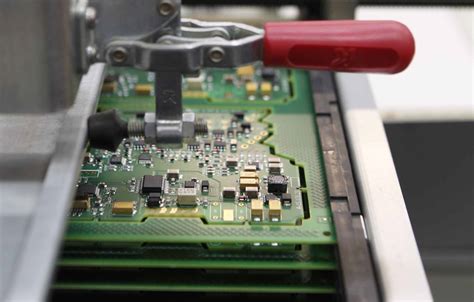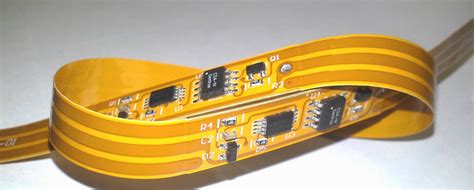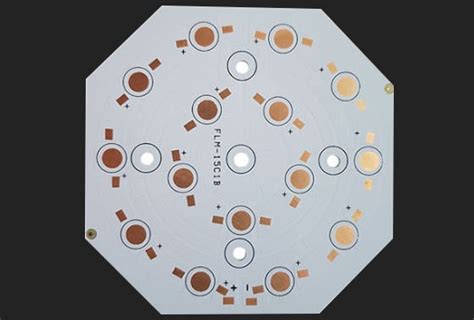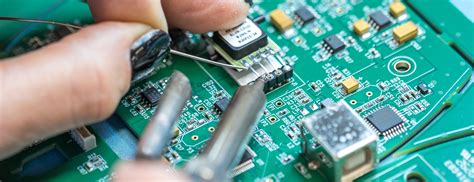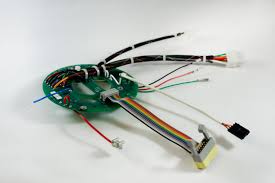Comprehensive Guide to Circuit Board Assembly Services
Key Takeaways
Understanding circuit board assembly services is crucial for anyone involved in electronics manufacturing. The complexities of the PCB assembly process encompass several phases, including design, manufacturing, and quality assurance. One essential insight is that a well-planned design phase significantly influences the efficiency of the entire pcba process. It’s during this phase that potential issues can be identified and rectified before they escalate into production problems.
Furthermore, employing advanced manufacturing techniques plays a vital role in boosting production efficiency and ensuring product quality. “Utilizing automated machines can drastically reduce human error and enhance precision in PCB assembly,” highlights an industry expert. It’s also worth noting the importance of rigorous quality assurance practices throughout this process; ensuring that each step adheres to industry standards can prevent costly mistakes.
Staying informed about emerging trends within PCB production, such as the integration of smart technology and environmentally friendly practices, can provide a competitive edge. Companies that adapt to these trends often see improvements not only in efficiency but also in overall product performance. Therefore, when considering your next steps in circuit board assembly, prioritize choosing a reliable partner who aligns with your specific needs and understands the nuances of pcba. This strategic approach will ultimately lead to better outcomes for your projects.
Introduction to Circuit Board Assembly Services
Understanding circuit board assembly services is crucial for anyone involved in electronics manufacturing, as these services play a pivotal role in the creation of reliable and efficient products. PCB assembly (PCBA) involves the mounting of electronic components onto a printed circuit board (PCB) to create a functional assembly. This process is not just a mechanical endeavor; it also incorporates intricate design considerations, thermal management, and electrical performance testing.
The first step in the pcba process is often the design phase, where engineers meticulously plan the layout of the circuit board. This includes both the placement of components and the routing of traces, which connect various parts of the circuit. Advanced software tools are utilized to simulate functionality and identify potential issues before physical production begins.
Once designs are finalized, manufacturers employ various manufacturing techniques tailored to meet specific project requirements. These may include surface mount technology (SMT) or through-hole technology—each having its own advantages depending on factors such as component size, circuit complexity, and production volume.
Quality assurance is another vital aspect that cannot be overlooked in circuit board assembly services. Ensuring that each assembly meets industry standards helps prevent future failures and maintains product integrity. Techniques such as automated optical inspection (AOI) and functional testing are implemented to guarantee high-quality outcomes.
To illustrate these processes and ensure clarity for readers, we present a table showcasing key stages in pcb assembly:
| Stage | Description |
|---|---|
| Design | Creating schematics and layouts for PCB |
| Component Sourcing | Acquiring all necessary electronic components |
| Assembly | Mounting components onto PCB |
| Quality Assurance | Inspecting assemblies for defects |
| Testing | Ensuring assemblies function correctly |
As you explore this guide further, you will gain insights into emerging trends that influence pcb assembly, strategies for enhancing efficiency in production processes, and how selecting the right partner can make all the difference in your project’s success.
The Circuit Board Design Process
The pcb assembly process begins with careful consideration of the circuit board design. This phase typically involves multiple iterations to ensure that the design meets both functional and manufacturability requirements. Designers utilize advanced software tools for schematic capture and layout, which allows for precise placement of components while adhering to electrical performance standards. One key aspect of effective design is maintaining a balance between trace width, component placement, and overall size constraints, which not only affects electrical performance but also impacts the ease of pcba during assembly. Additionally, as modern electronics evolve, it’s crucial to integrate considerations for thermal management and signal integrity right from the beginning. Furthermore, collaboration with manufacturing specialists during the design phase can significantly enhance outcomes; they often provide insights into cost-effective materials and techniques that can streamline the pcb assembly process later on. Engaging in this collaborative approach fosters innovation while minimizing potential production issues, hence improving the overall quality and durability of the final product. Thus, a well-thought-out design process serves as a vital foundation for effective circuit board assembly, paving the way for optimized production efficiency and enhanced product performance in the competitive electronics marketplace.
Manufacturing Techniques for PCB Assembly
When delving into the realm of pcb assembly, it is essential to understand the various manufacturing techniques employed to ensure quality and efficiency. The process begins with surface mount technology (SMT), which allows for the precise placement of components on the surface of the printed circuit board (PCB). This technique has revolutionized pcba by facilitating smaller, more complex designs while maintaining high production speeds. Another significant method is through-hole technology, which involves inserting components through pre-drilled holes in the PCB, providing a robust connection, especially for components that experience mechanical stress.
These techniques do not work in isolation; rather, they are often coupled with advanced automated optical inspection (AOI) systems that meticulously check for defects and ensure adherence to quality standards during production. Additionally, reflow soldering is critical in pcb assembly, as it solidifies the solder paste that holds the electronic components in place, thus ensuring durability and functionality in varying conditions.
Moreover, keeping abreast of emerging trends such as flexible PCB designs and integration of smart manufacturing principles enhances production efficiency and could significantly improve product performance. The choice of manufacturing technique can dramatically affect both cost and reliability; therefore, selecting a method that aligns with project specifications is vital for optimal outcomes in pcba processes. These innovations not only contribute to enhanced product functionality but also position manufacturers to be competitive in a rapidly evolving market landscape.
Quality Assurance in Circuit Board Assembly
Quality assurance plays a crucial role in the pcb assembly process, ensuring that each product meets stringent standards before it reaches the market. The quality assurance process encompasses various stages, from initial design reviews to final product testing. By implementing effective quality control measures, manufacturers can identify and rectify potential issues early in the pcba lifecycle, thereby reducing the likelihood of defects and enhancing overall product reliability. Key aspects of quality assurance include visual inspections, automated optical inspections (AOI), and functional testing, which collectively help verify that components are accurately placed and soldered on the circuit boards. Additionally, adherence to industry standards such as IPC-A-610 can further bolster confidence in the quality of pcb assembly services. The integration of advanced technologies like artificial intelligence and machine learning into testing processes is also emerging as a trend, providing more precise insights into manufacturing defects and contributing to improved consistency in output. Ultimately, a robust quality assurance framework not only enhances production efficiency but also significantly influences customer satisfaction by delivering high-performing products that meet or exceed expectations.
Emerging Trends in PCB Production
As the electronics industry evolves, so do the pcb assembly methods and technologies utilized in printed circuit board assembly (PCBA). One of the most notable trends is the increasing integration of automation and advanced robotics into the manufacturing process. This shift allows for higher precision and efficiency, minimizing human errors and enhancing production rates. Additionally, the rise of miniaturization continues to drive the need for more compact and complex designs in pcb assembly, pushing manufacturers to adopt innovative approaches that accommodate smaller components without sacrificing performance.
Another significant trend is the implementation of environmentally friendly practices throughout the production cycle. With growing awareness about sustainability, many companies are adopting green manufacturing processes that reduce waste and energy consumption. Consequently, this not only meets regulatory standards but also appeals to eco-conscious consumers.
Furthermore, innovations in materials—such as flexible, high-frequency substrates—are allowing for new possibilities in circuit board design. These materials enhance signal integrity and thermal performance, which are critical as electronic devices become more powerful yet compact. The emergence of new technologies also facilitates improved quality assurance protocols in PCBA, enabling manufacturers to implement real-time monitoring systems that ensure every unit meets stringent quality standards before reaching consumers.
Collectively, these trends indicate a shifting landscape within PCB production aimed at bolstering efficiency while maintaining high-quality outputs. As industries demand more sophisticated electronics, embracing these advancements will be crucial for staying competitive in the global market.
Enhancing Production Efficiency
To enhance production efficiency in pcb assembly processes, manufacturers must strategically integrate advanced technologies and streamlined methodologies. One effective approach involves adopting automated machinery that can significantly reduce manual errors while increasing the speed of production. Automation not only optimizes the use of resources but also ensures a high level of consistency in the pcba output, allowing for a more reliable assembly process. Furthermore, employing Lean Manufacturing principles can eliminate waste and optimize workflow, thus contributing to an increase in overall productivity.
Investing in employee training is equally vital; skilled technicians are essential for effective operation of sophisticated equipment and for maintaining strict quality control measures. Implementing Continuous Improvement (CI) practices can provide feedback loops that encourage innovation and facilitate problem-solving among teams, ensuring that production challenges are addressed proactively.
Additionally, leveraging data analytics can provide insights into manufacturing performance by identifying bottlenecks and areas needing improvement. By using real-time data tracking systems, companies can make informed decisions rapidly, thus improving response times to market demands.
In summary, combining automation with effective workforce training and advanced data analytics will significantly enhance production efficiency in circuit board assembly services, ultimately leading to superior product quality and customer satisfaction.
Improving Product Performance through Assembly Services
To achieve optimal product performance, leveraging pcb assembly services plays a pivotal role in today’s competitive market. The PCBA process not only encompasses the assembly of various electronic components onto a printed circuit board but also involves meticulous attention to detail and adherence to specific quality standards. Through advanced manufacturing techniques, such as surface mount technology (SMT) and through-hole assembly, manufacturers can ensure that components are securely and accurately placed, which directly impacts the functionality and reliability of the final product. Furthermore, implementing rigorous quality assurance measures throughout the assembly process, from initial design to final testing, helps identify potential issues early on, reducing costly rework and ensuring timely delivery. As technology evolves, staying abreast of emerging trends in pcb assembly, such as automation and smart manufacturing, can greatly enhance production efficiency while also optimizing product performance. Ultimately, selecting a competent pcb assembly partner that prioritizes both quality and innovation is crucial for businesses looking to improve their products in an ever-evolving landscape.
Choosing the Right PCB Assembly Partner
Selecting the right PCB assembly partner is crucial for the success of any electronic project. This decision can influence not only the production timeline but also the overall quality and performance of the final product. When considering a partner for PCBA services, organizations should evaluate their technical expertise, capacity, and experience in handling various types of circuit boards, including complex multilayer designs. A reputable partner should demonstrate a commitment to quality assurance processes, ensuring that every aspect of the assembly is meticulously executed. This can involve certifications such as ISO 9001 or IPC standards, which can be indicators of a partner’s dedication to maintaining high-quality production practices. Furthermore, effective communication plays a vital role in this partnership; choosing a partner who is responsive and transparent can significantly enhance collaboration. It’s also important to consider their technological capabilities—whether they utilize advanced machinery or offer innovative solutions that could streamline production and improve cost efficiency. Finally, assessing past client experiences or seeking testimonials can provide insight into their reliability and customer service approach in handling PCB assembly projects. By thoroughly evaluating potential partners on these criteria, businesses can ensure they are making an informed decision that aligns with their production goals and enhances overall product performance.
Conclusion
In summary, the world of circuit board assembly services is continuously evolving, driven by advancements in technology and increasing market demands. As we have explored throughout this guide, understanding the nuances of pcb assembly is critical to achieving optimal production results. From selecting the appropriate manufacturing techniques to ensuring robust quality assurance measures, every step plays a significant role in the efficacy of the pcba process. The integration of emerging trends can further enhance efficiency and performance, paving the way for innovations that meet contemporary challenges. As such, businesses must remain vigilant in choosing the right partners for their circuit board assembly needs—partners who are equipped not only with technical prowess but also an understanding of the latest developments within the industry. By embracing these considerations, companies can better position themselves for success in a highly competitive landscape.
FAQs
What is PCB assembly?
PCB assembly (often abbreviated as PCBA) refers to the process of soldering electronic components onto a printed circuit board. This intricate process involves the placement of various components, including resistors, capacitors, and integrated circuits, ensuring they are connected properly for the board to function effectively.
Why is quality assurance important in PCB assembly?
Quality assurance in pcb assembly is vital as it ensures that each board meets specified standards and operates reliably. Poor quality can lead to product malfunctions, increased returns, and damage to a company’s reputation.
What are the common manufacturing techniques used in PCB assembly?
Common manufacturing techniques for PCBA include surface mount technology (SMT), through-hole technology, and mixed technology. Each technique has its advantages depending on factors like component type and board design.
How can I improve production efficiency in PCB assembly?
Improving production efficiency can be achieved through several strategies: optimizing the workflow, utilizing advanced technology such as automated machinery, implementing lean manufacturing principles, and ensuring proper training of personnel involved in the pcb assembly process.
What emerging trends should I be aware of in PCB production?
Emerging trends include miniaturization of components, increased automation in assembly processes, the adoption of environmentally friendly materials for production, and enhanced data analytics for quality control purposes.
How do I choose the right PCB assembly partner?
Selecting the right partner involves evaluating their technical expertise, production capabilities, quality assurance processes, and customer service reputation. It’s important to ensure they can meet your specific requirements for both short-run and high-volume PCBA projects.
For more detailed information on these topics or if you’re considering professional services for your electronic assemblies, please click here: AndwinPCB – PCB Assembly Services.

